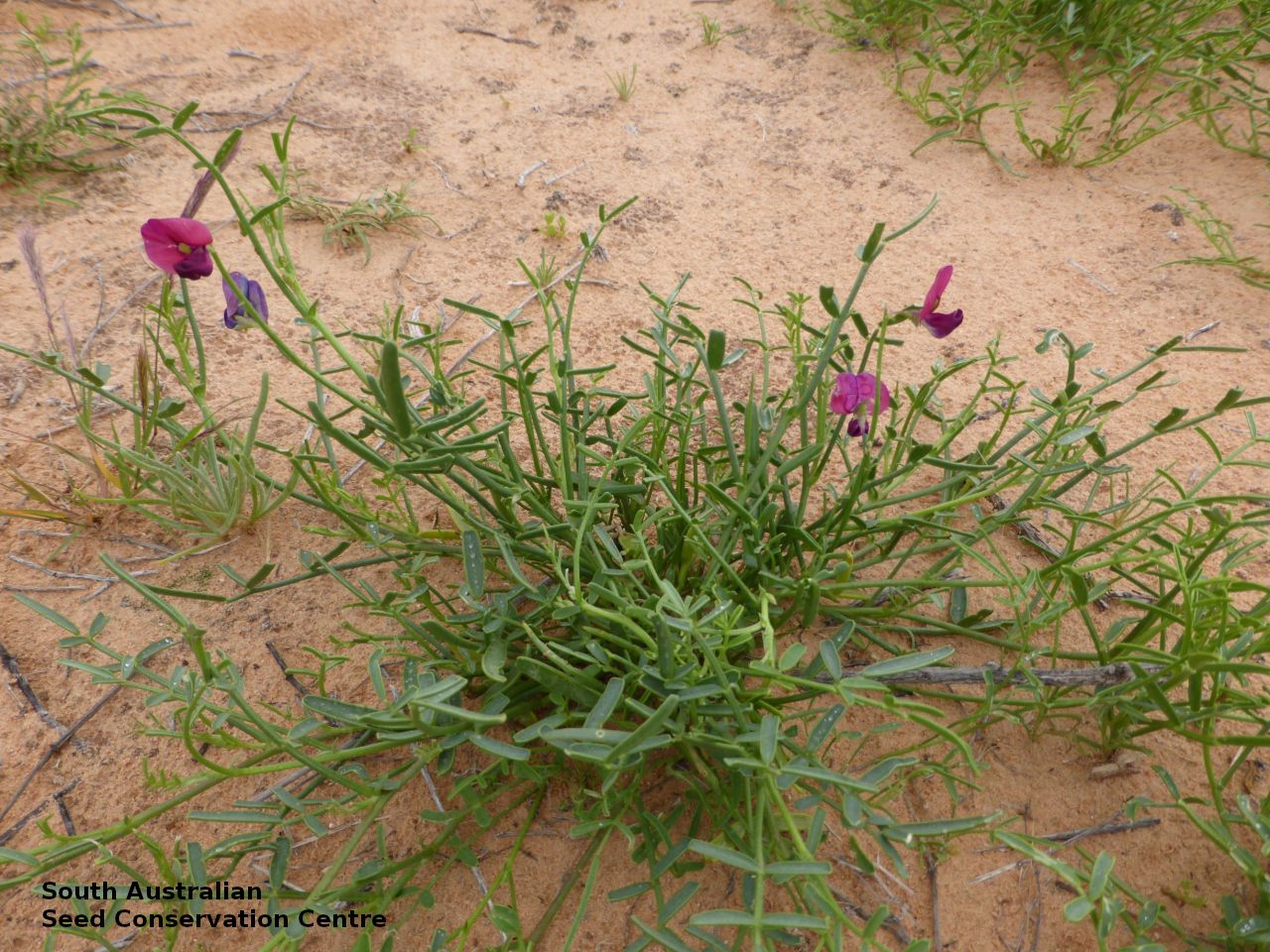
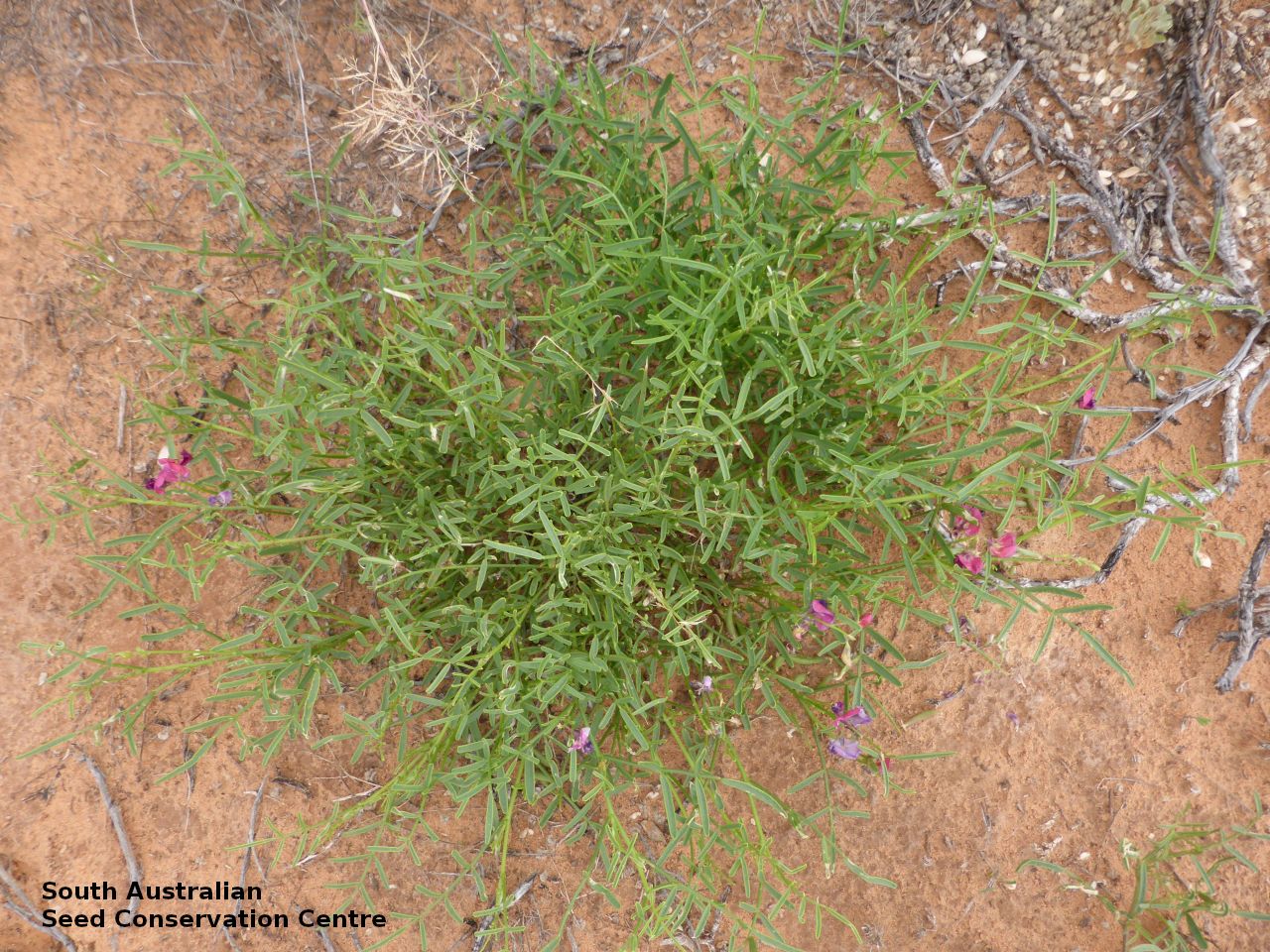
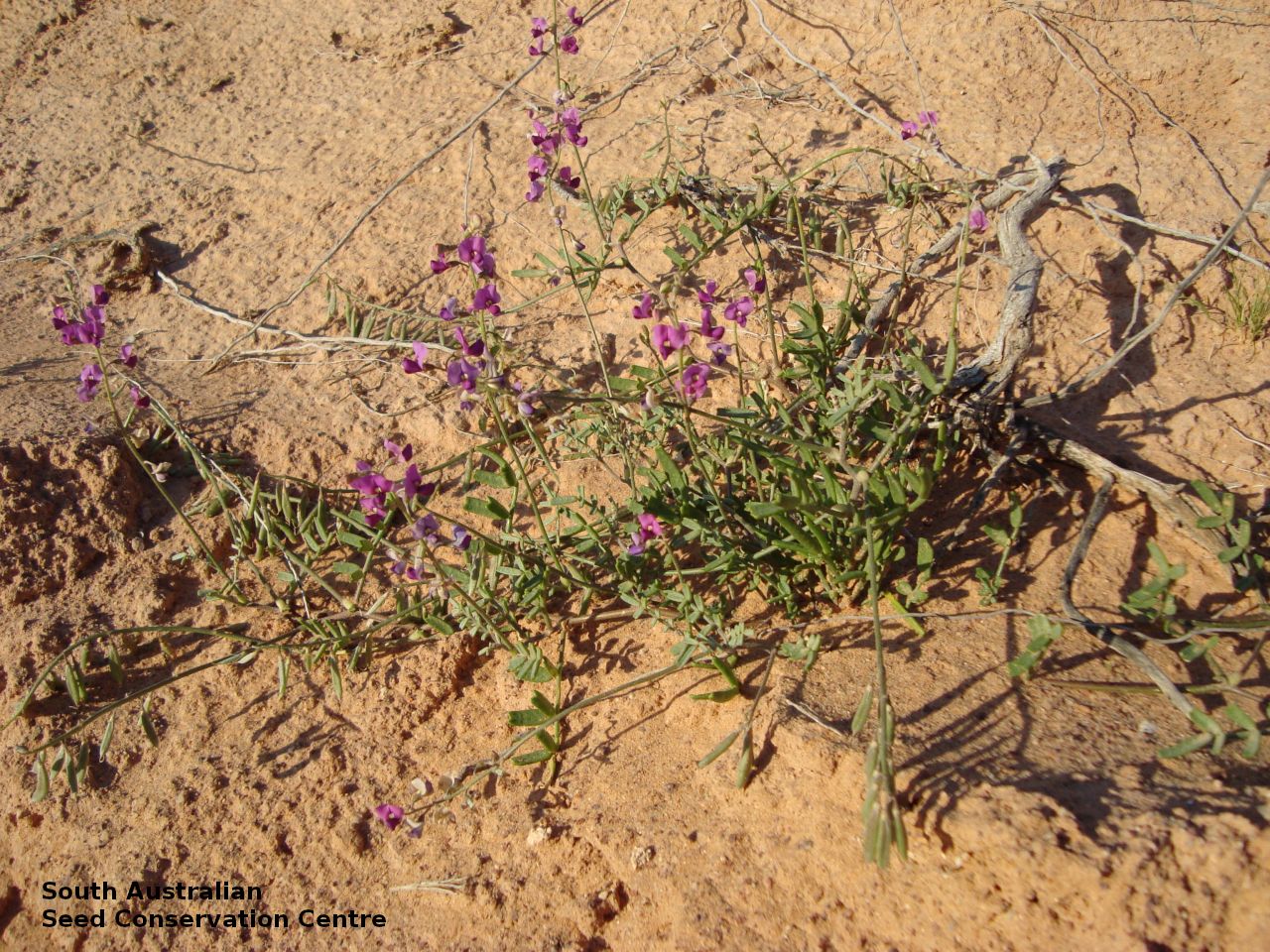
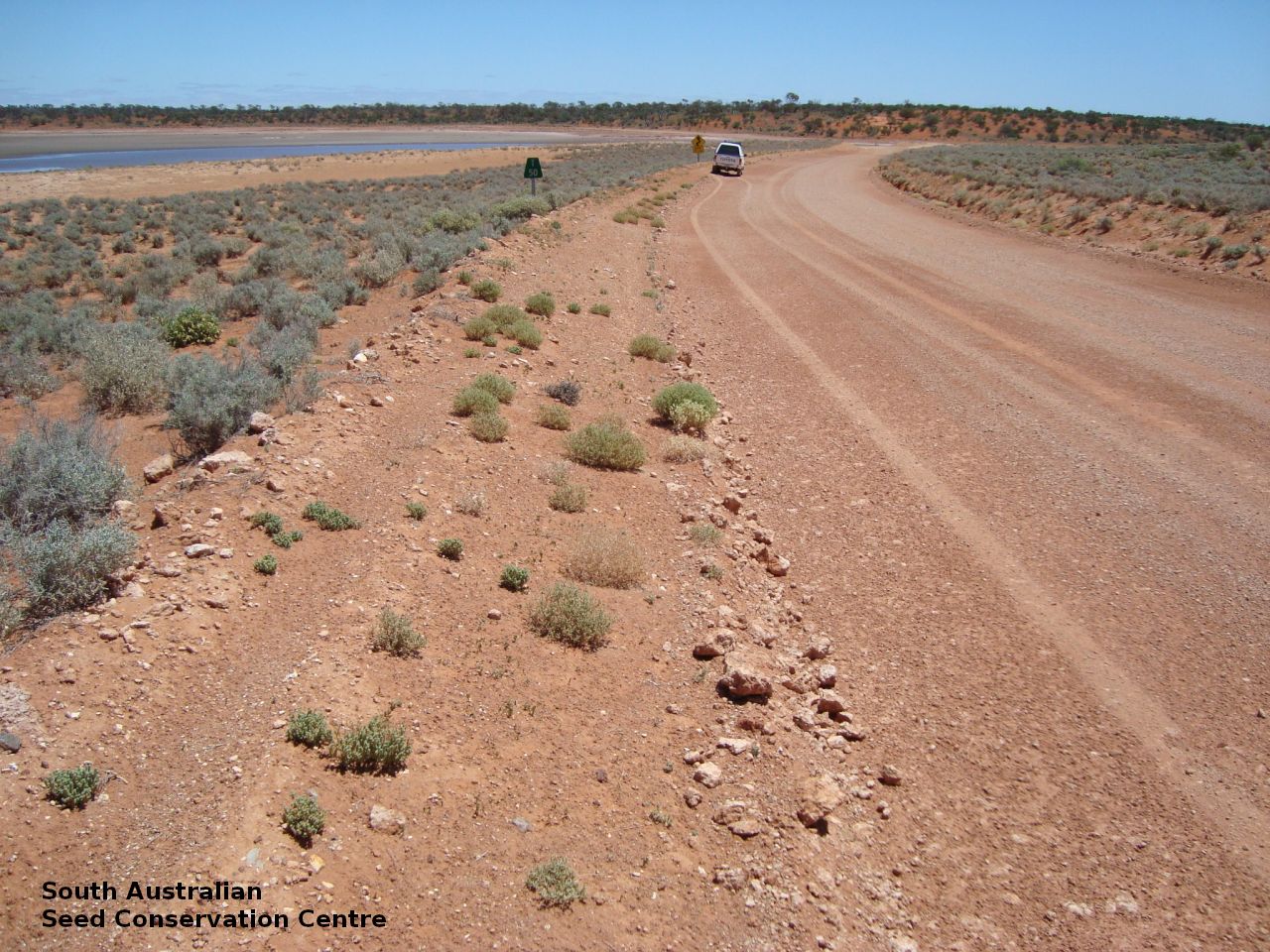
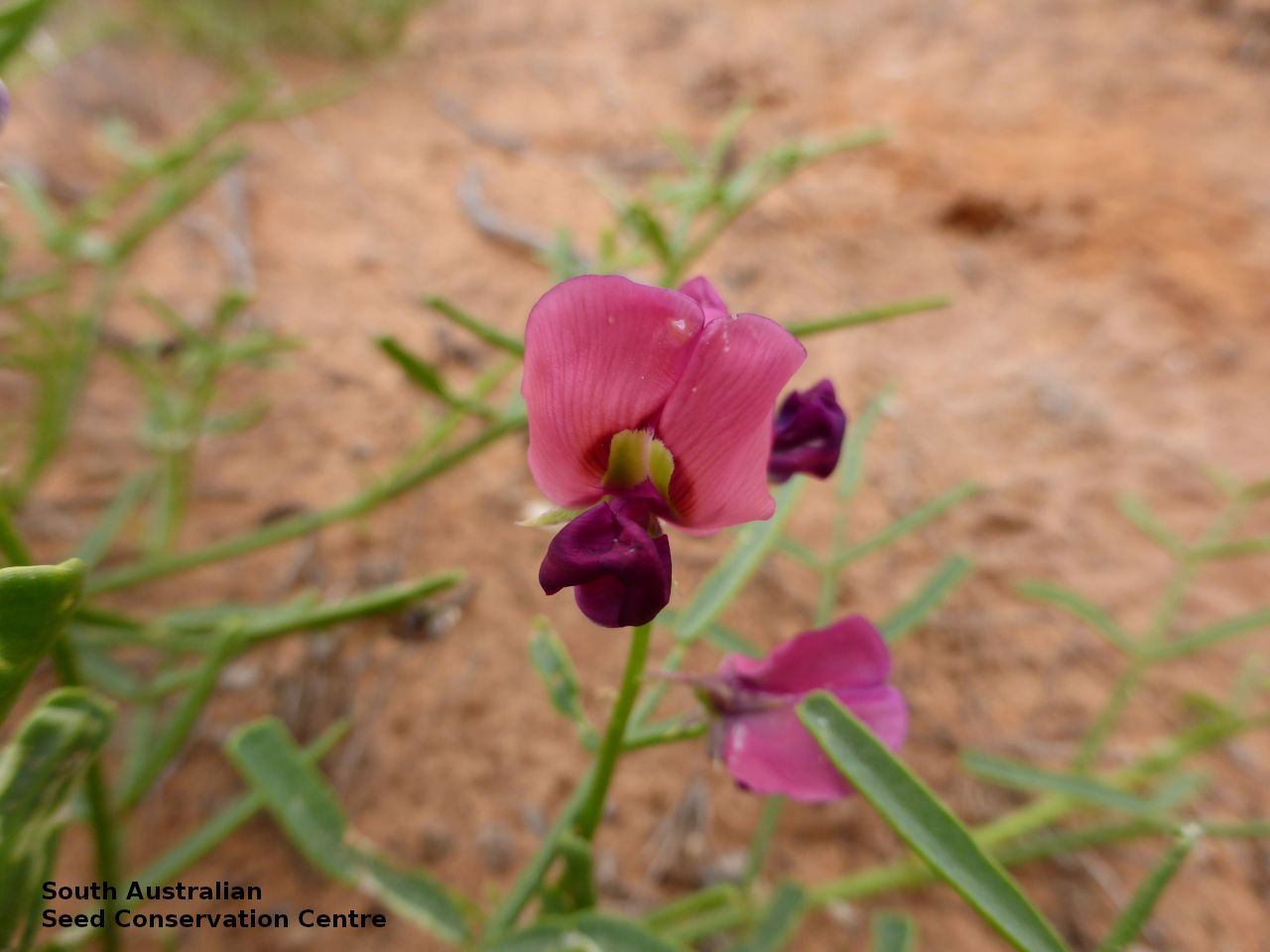
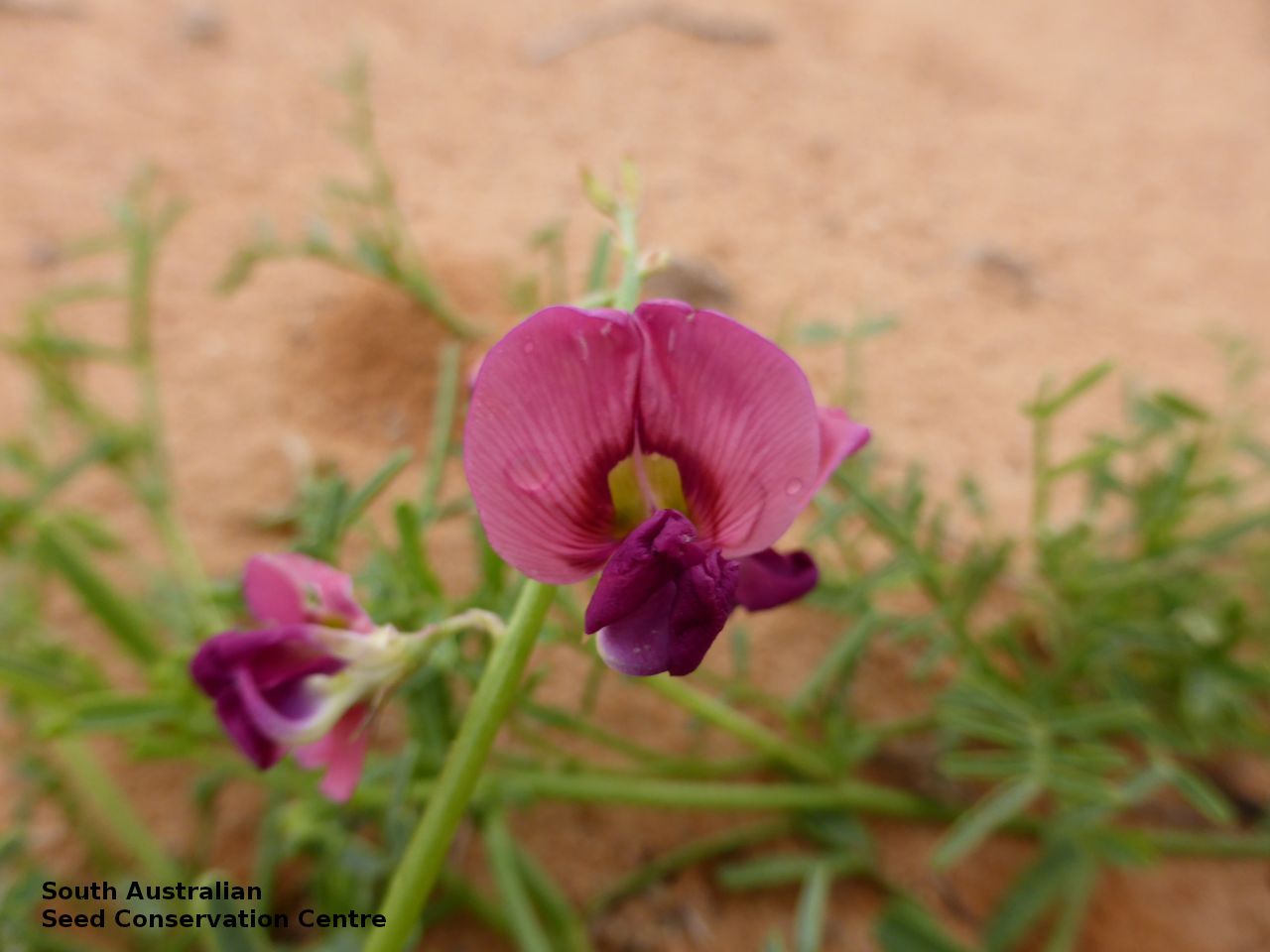
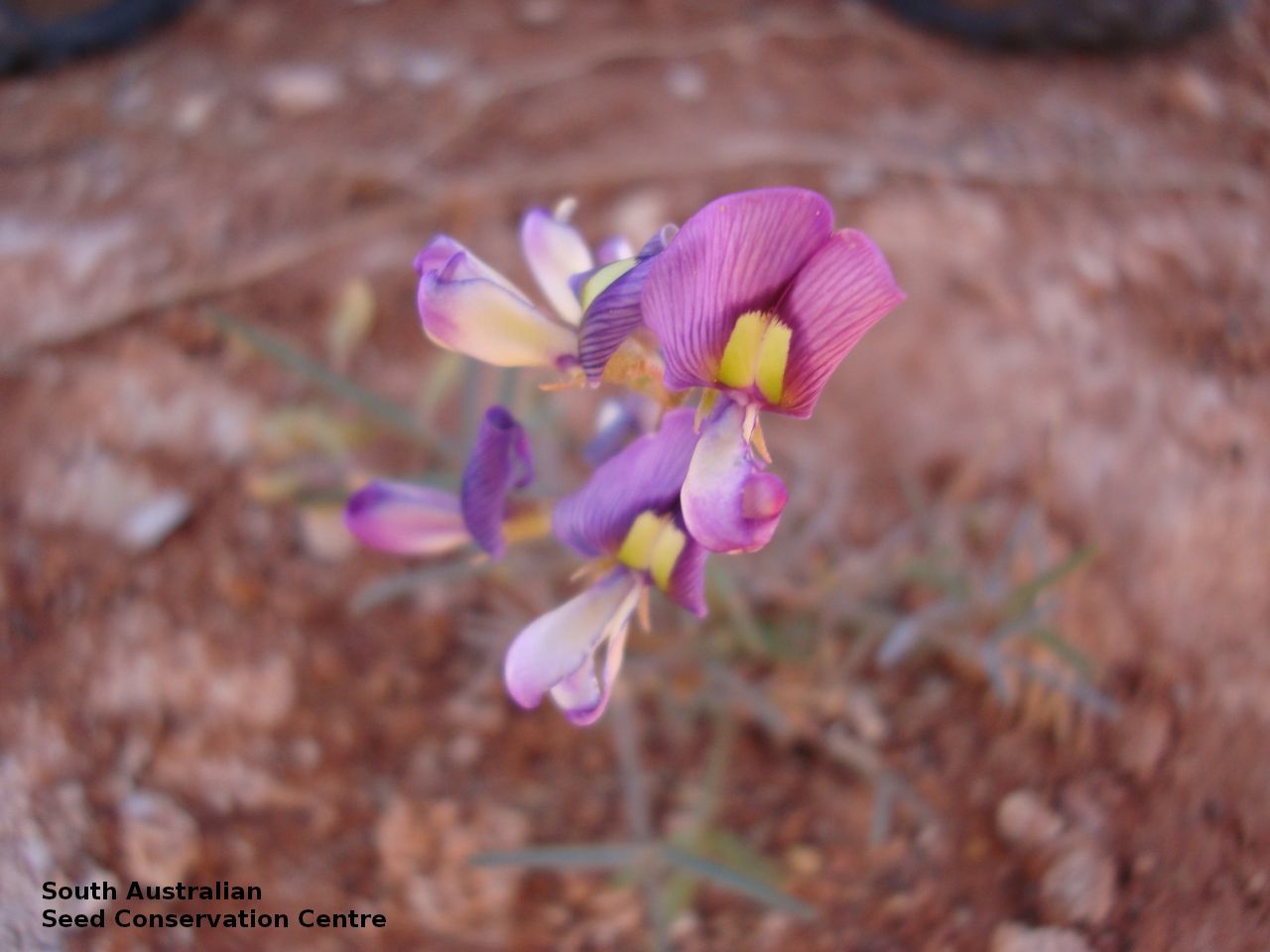
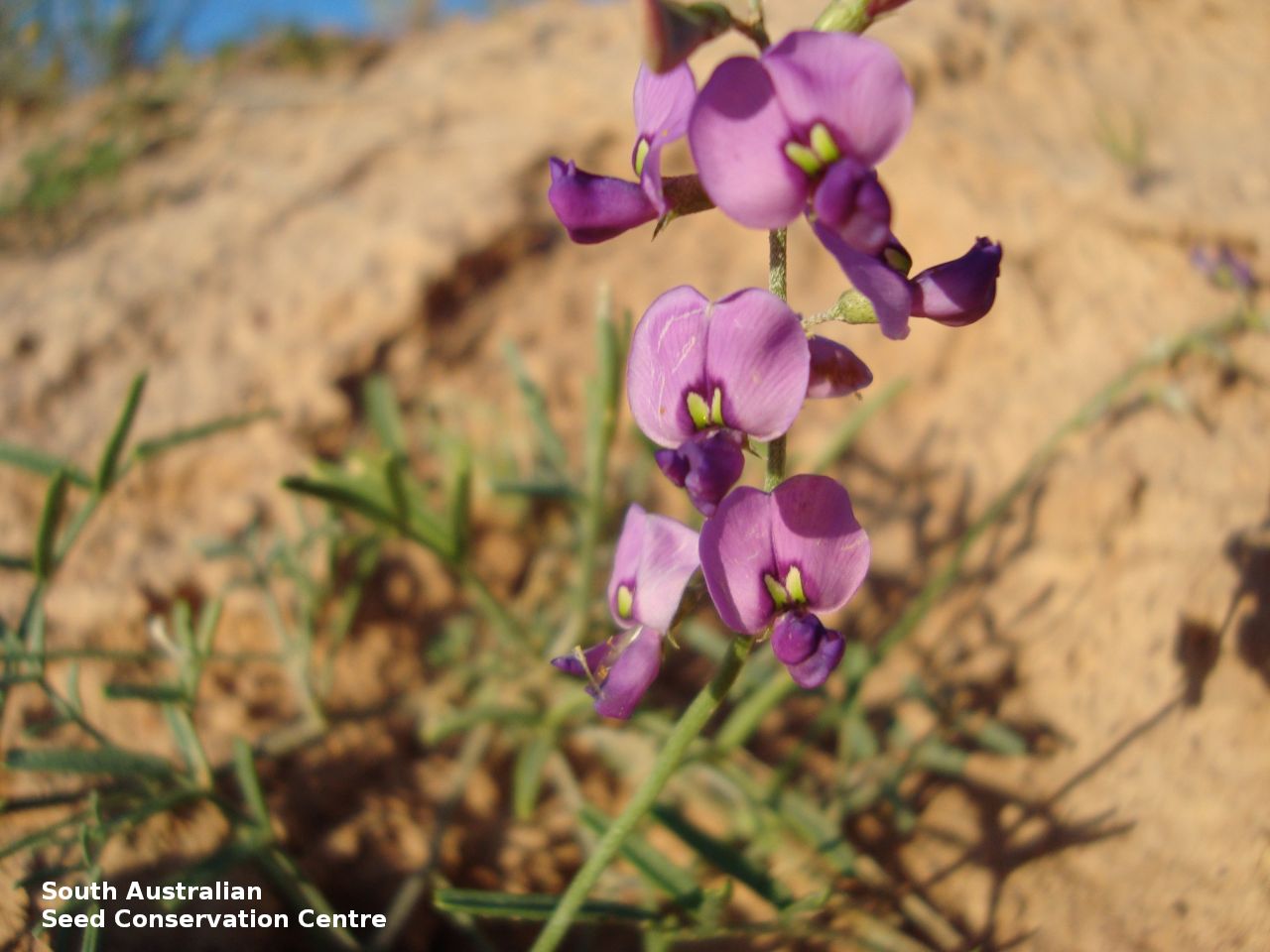
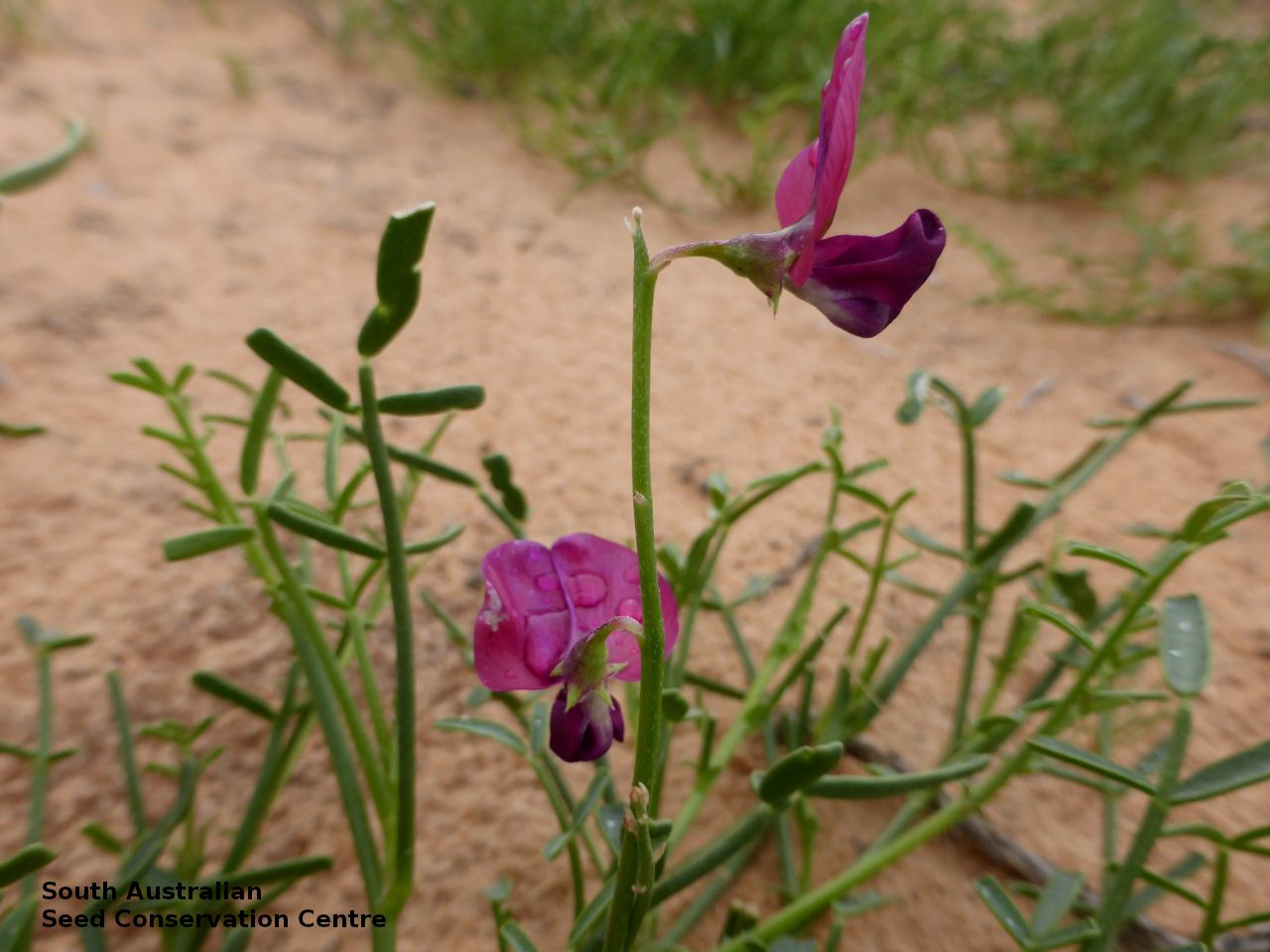
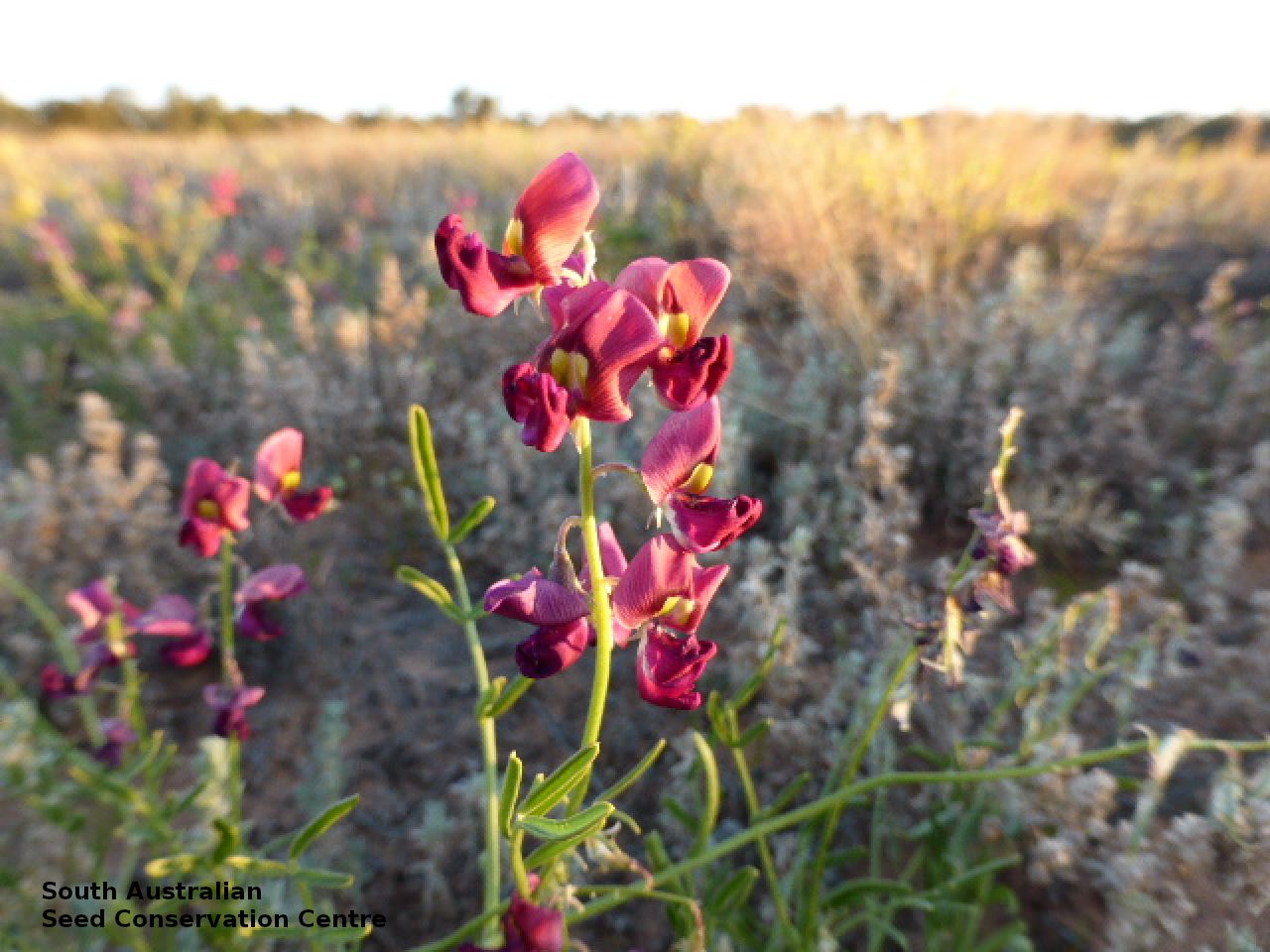
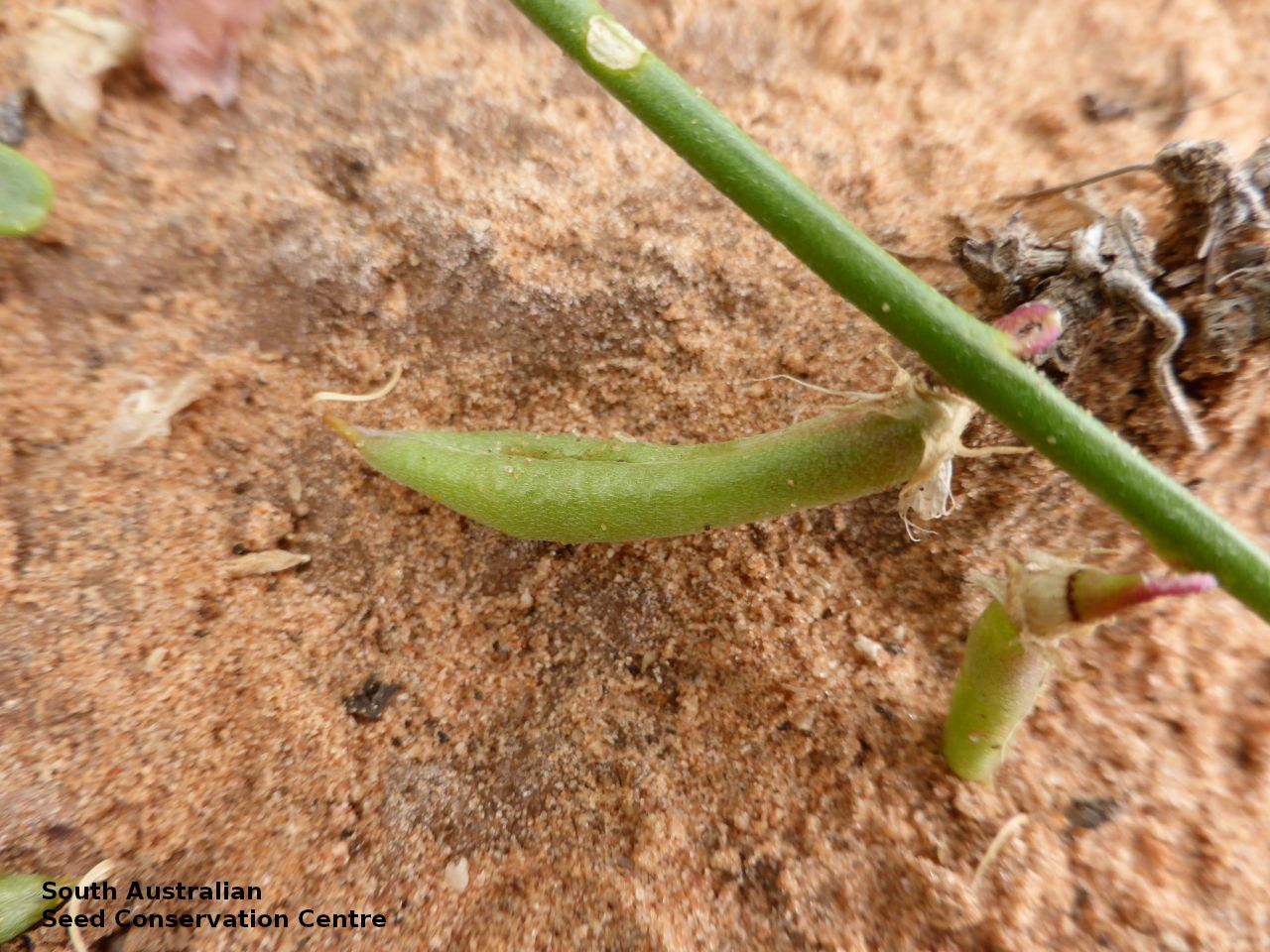
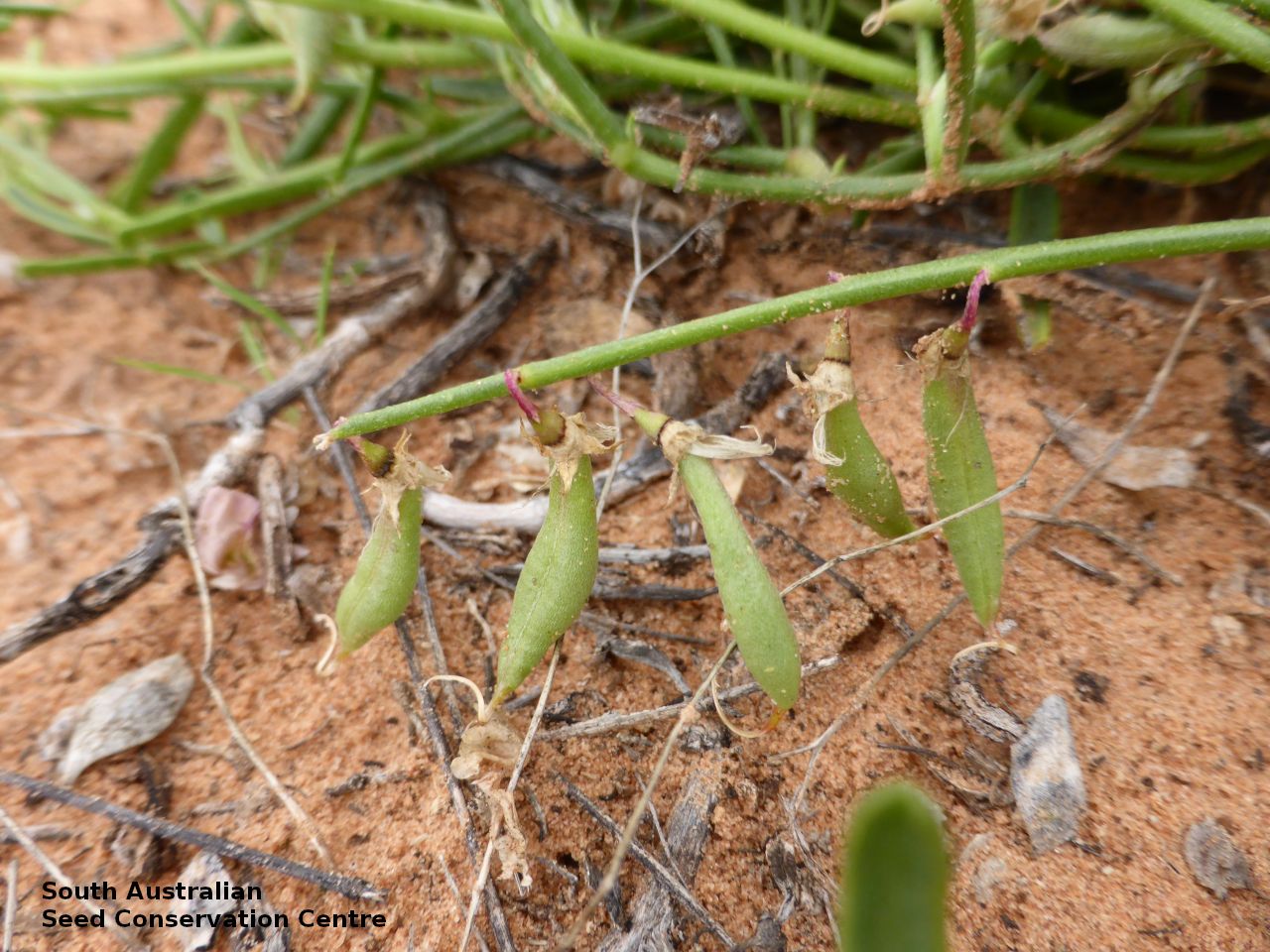
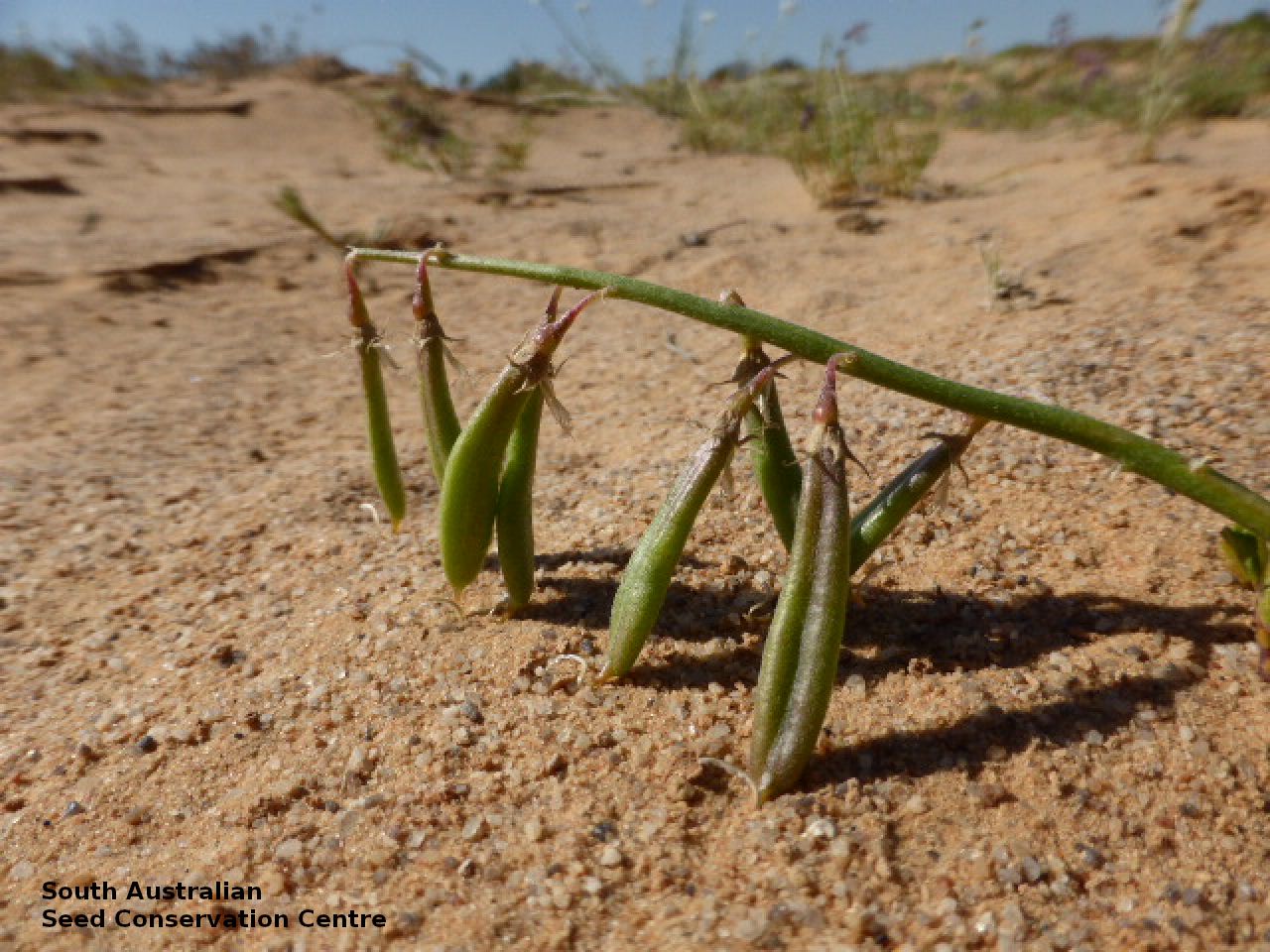
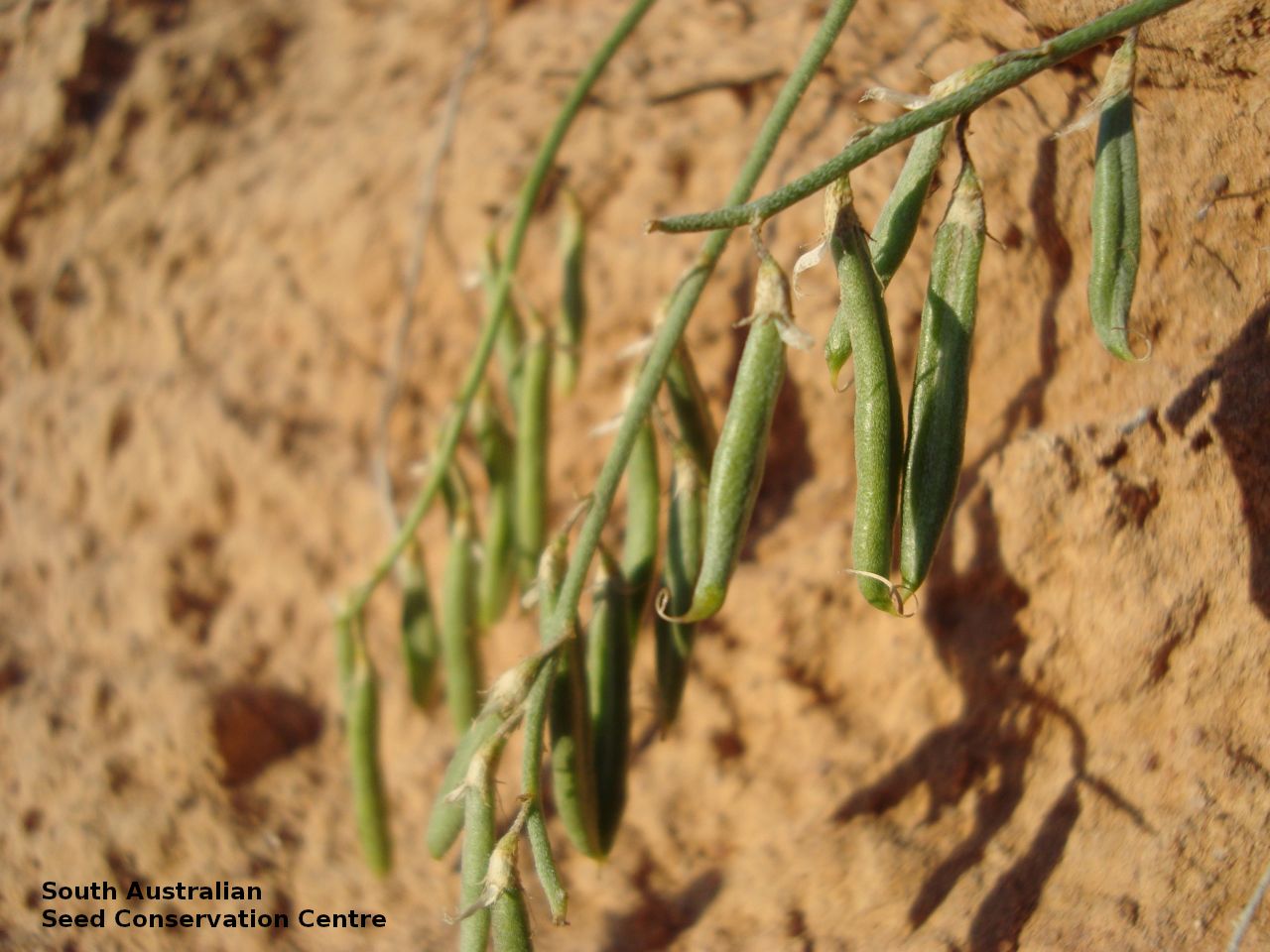
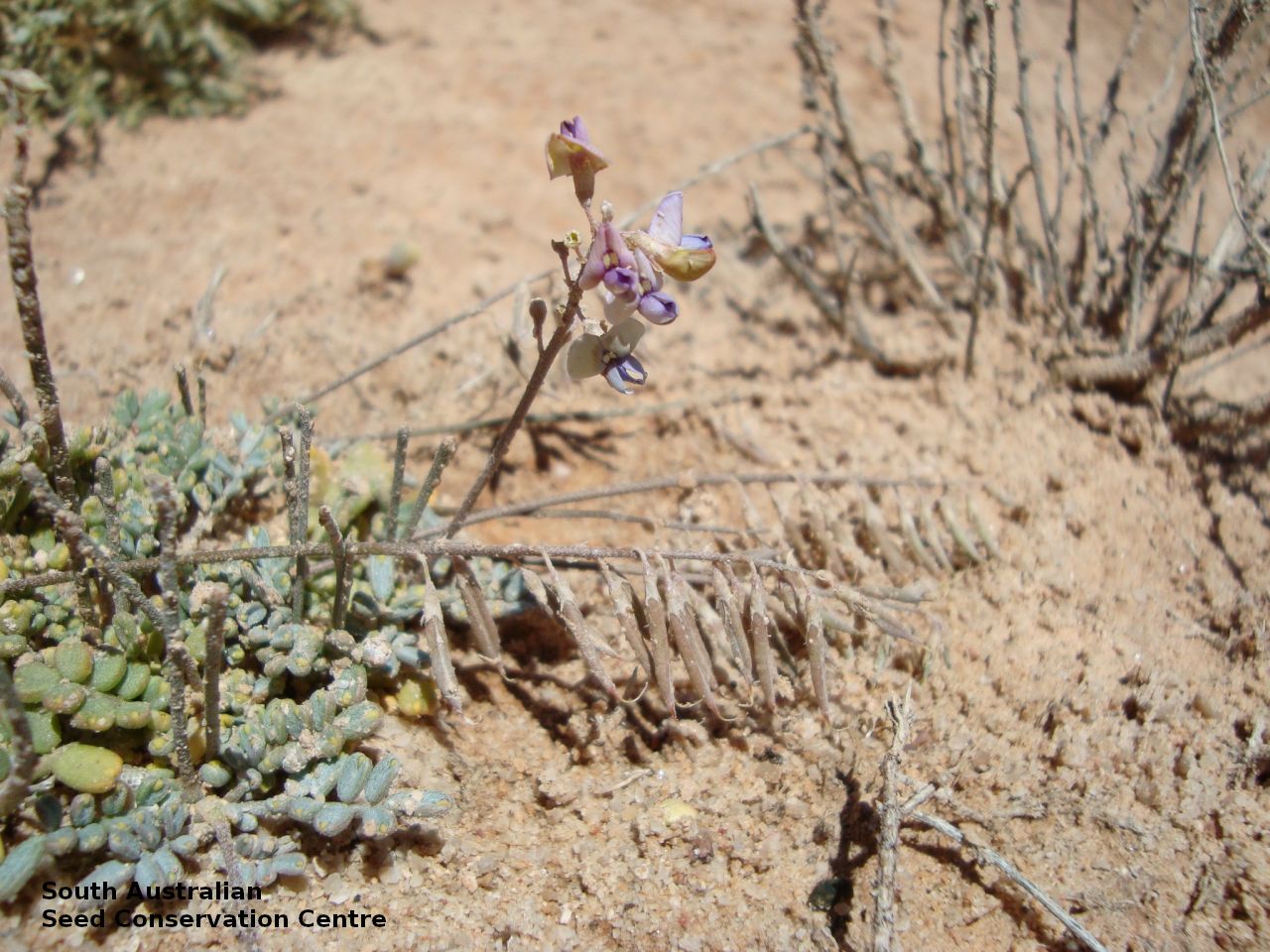
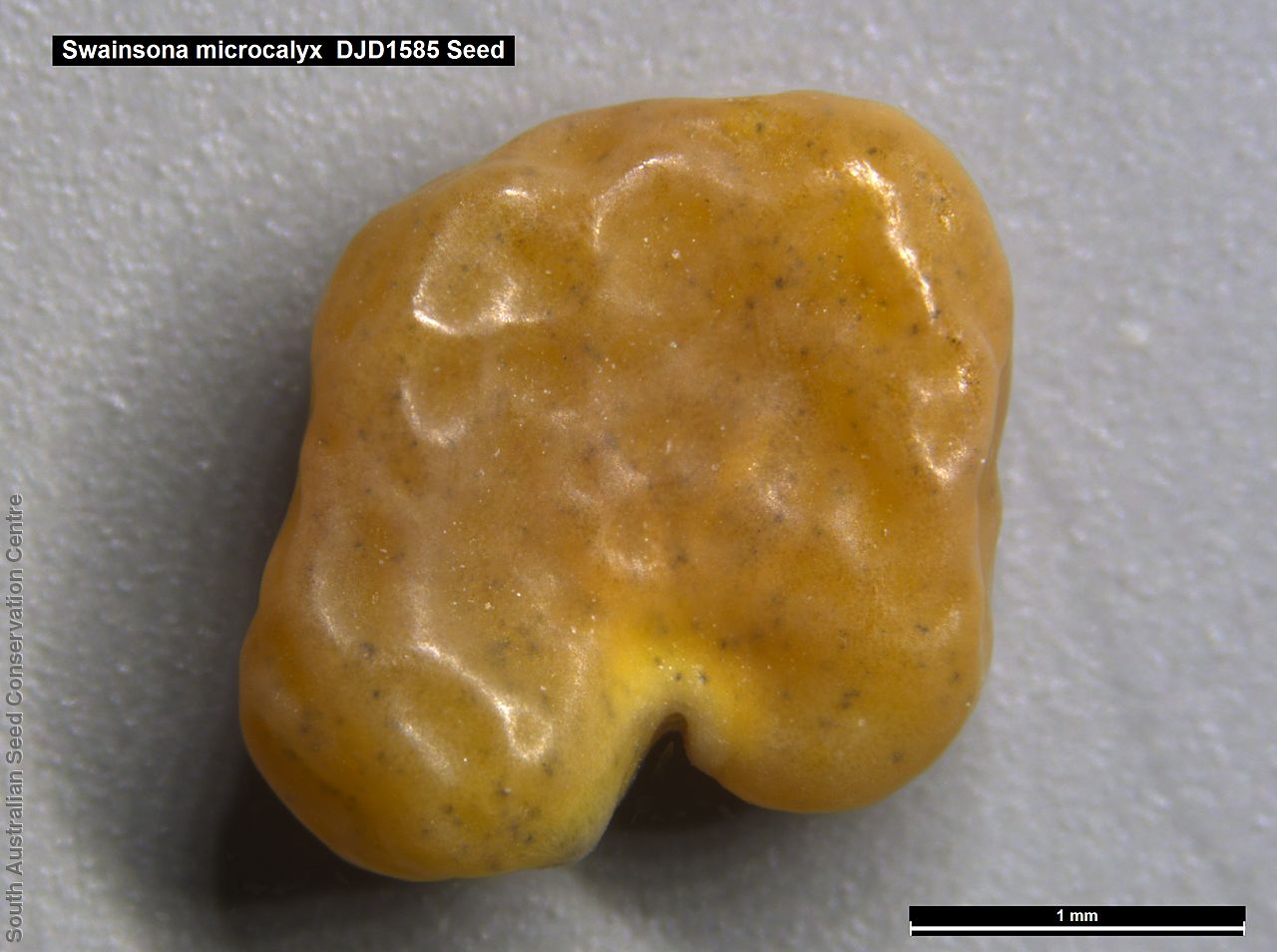
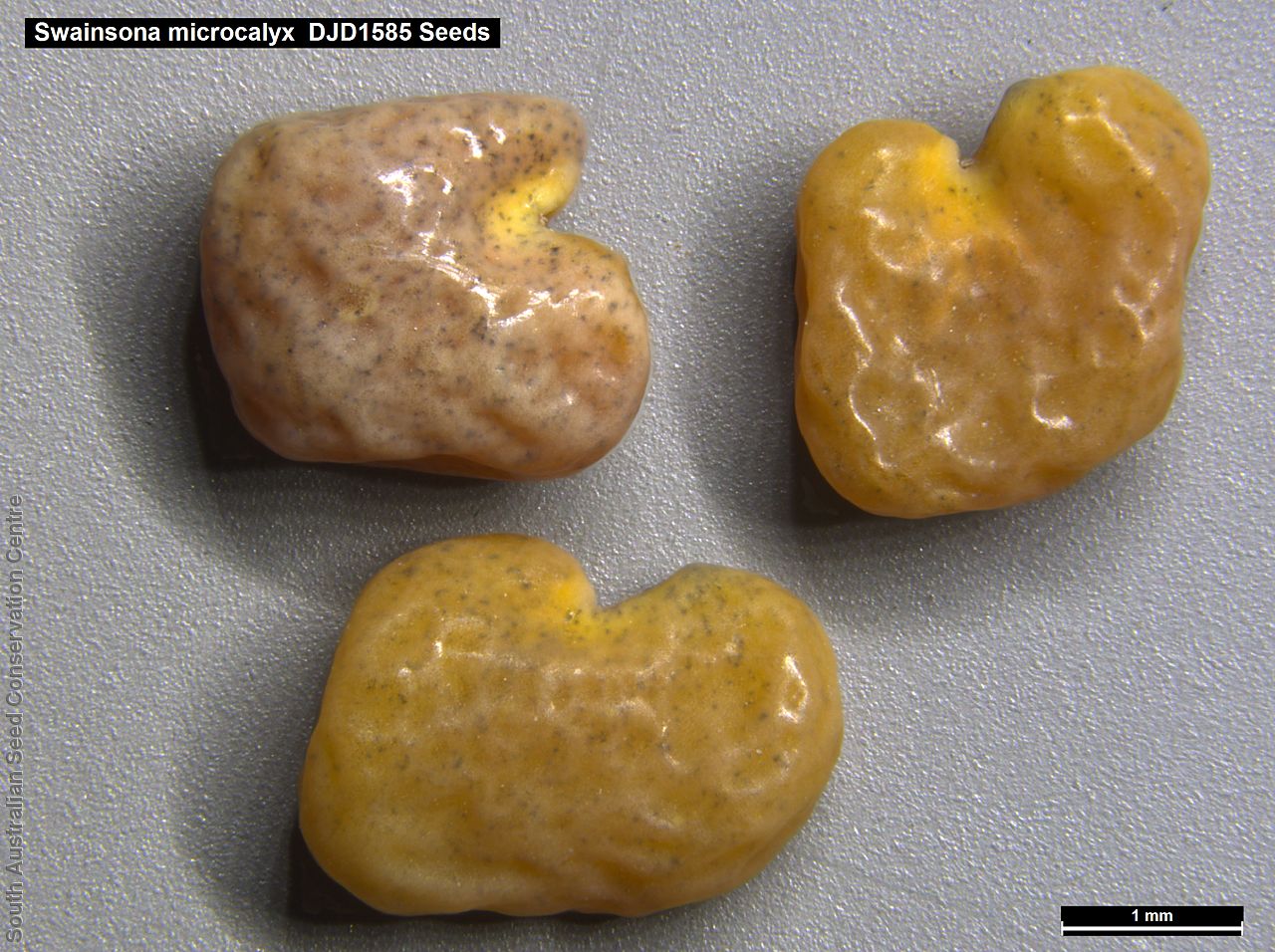

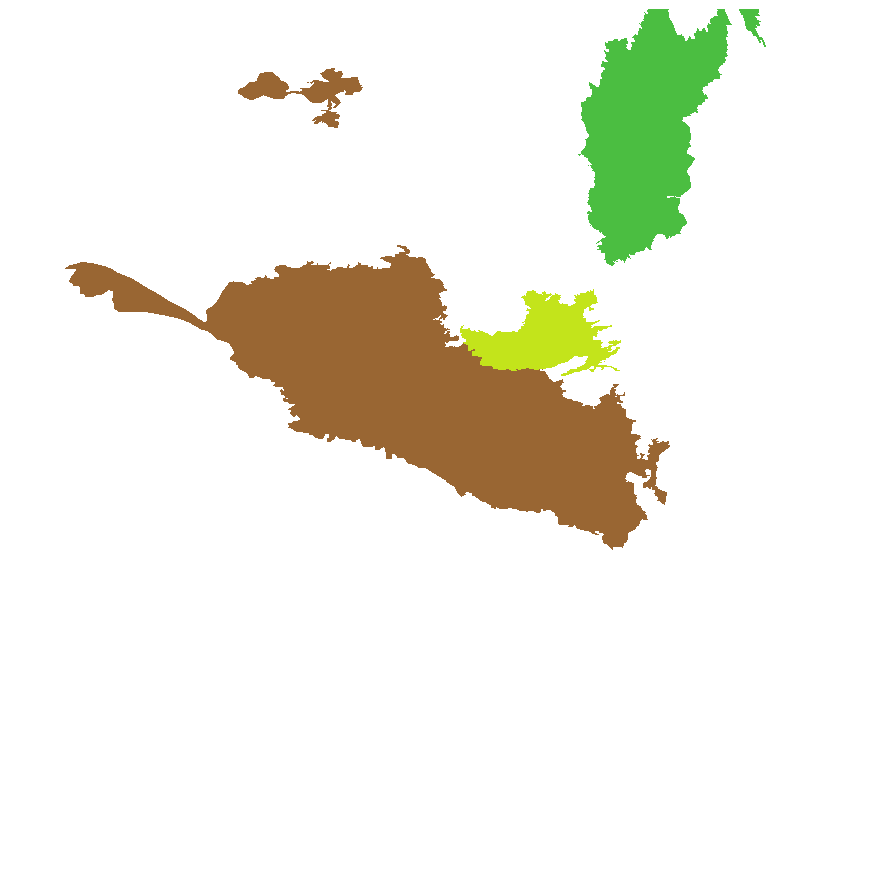
Etymology
Swainsona named after Isaac Swainson (1746-1812), an English scientist and horticulturalist who had a private botanic garden near London. Microcalyx from the Greek 'micros' meaning small and 'calyx' meaning cover or cup; referring to the relatively small calyx of the species.
Distribution and status
Found in an area north of Eyre Peninsula in South Australia usually on flat, sandy margins of salt lakes with ephemeral herbs. Also found in Western Australia. Native. Common in South Australia. Common in Western Australia.
Herbarium regions: Gairdner-Torrens, Eyre Peninsula
NRM regions: Eyre Peninsula, South Australian Arid Lands
AVH map: SA distribution map (external link)
Plant description
A prostrate or low-growing perennial with numerous smooth stems arising from a taproot. Leaves usually 2-6cm long with 5-9 pubescent leaflets. Flowers purple. Fruits are cylindrical-oblong pod to 20mm long and 4mm wides, tapered at both ends with scattered appressed hairs. Seeds are light brown semi-flat reinform seed to 3mm long with a wrinkled surface. Seed embryo type is bent.
Seed collection and propagation
Collect seeds between October and November. Collect mature pods. Mature pods can be found lying on the ground next to the plant containing hard seeds. Place the pods in a tray and leave to dry for a week. When dried the pods can become hard and difficult to open. Use a rubber bung to rub the pods or break the pods open with your fingers to dislodge the seeds. Use a sieve to separate the unwanted material. Store the seeds with a desiccant such as dried silica beads or dry rice, in an air tight container in a cool and dry place. From one collection, the seed viability was high, at 100%. This species has physical dormancy that need to be overcome for the seed to germinate (e.g. nicking or softening the seed coat).
| Location | No. of seeds (weight grams) | Number of plants | Date collected | Collection number Collection location | Date stored | % Viability | Storage temperature |
|---|---|---|---|---|---|---|---|
| MSB | 1,250 (2.31 g) | 7-Dec-2005 | DJD302 Gairdner-Torrens | ||||
| BGA | 10,000 (27.42 g) | 2-Nov-2009 | DJD1585 Eyre Peninsula | 1-Jun-2010 | 100% | -18°C |
Number of plants: This is the number of plants from which the seeds were collected.
Collection location: The Herbarium of South Australia's region name.
% Viability: Percentage of filled healthy seeds determined by a cut test or x-ray.